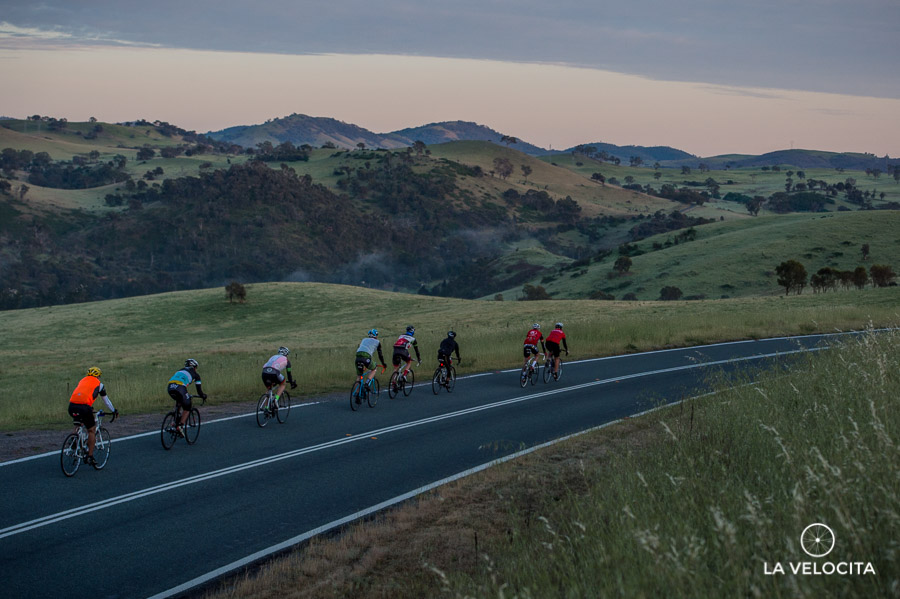Is the Australian Gran Fondo dead?

Over the last 20 years in Australia we’ve seen the long distance challenge ride grow and grow. There has been rides for charities, fundraisers and for personal reward added to the calendar, to the point that it seemed that there was no plateau to the demand for cycling events.
THE INDUSTRY INSIDER
Images - Andrew Clifforth
Over the last two years, we saw Bicycle Network expand their Peaks into a three-pronged interstate series, CyclingTips excited everyone with the sell-out Giro Della Donna, the Cadel Evans Great Ocean Road Race pumping up its ‘People’s Ride’ which sold out in 2016 and in the last few months, Bike Exchange was plugging their 2016 Winery ride like there was no tomorrow.
In a rush to capitalise on “the new golf”, events companies and not-for-profits alike are competing for a slice of the event pie.
As cycling participation increases nationally, we've seen the number of events grow and grow and grow to the point where this writer feels the market just isn't big enough to support so many rides.
Every cyclist is so overwhelmed for choice in their own backyard, which – coupled with annual increases in entry prices – has made it difficult for the average fred to afford to more than one or two paid rides a year. And, even if the cash was there, it’s another thing entirely to justify the time investment.
In a two year period, event providers have flooded the market with their own product and cyclists are left overwhelmed with choice.
They could do a Peaks Challenge event, but do they really want to spend six months preparing for an event so arduous? Why not tackle CyclingTips’ Giro Della Donna – or then again, can they justify $160 and a weekend away from the family for a course that could be ridden any day of the year? After a sell-out event in 2015, there’s a tone of desperation to its promotion this year as every cycling outlet featured advertising for it,
Bicycle Network has experienced low sales across all of its events and across all of its event categories. According to their online releases, Peaks Challenge Cradle Mountain only had around 400 riders in 2016, but 700 in 2015, whilst the Gold Coast edition struggled to crack 700 riders, down from just under 1000 in 2015. The RACV Ascent featured only a couple of hundred riders on a course that would have cost tens of thousands in traffic management alone, and the “it always sells out” Falls Creek, still isn’t sold out three month before the event.
The MS Society’s iconic 30 year old MS Gong ride discounted tickets by up to 50% in the face of decreasing sales, Bicycle NSW’s Spring Cycle has been struggling to draw the same crowds it once did and we’ve seen event promoters all over Australia struggling to reach their goals and Cycling Tips’ Giro Della Donna didn’t reach the sell out numbers it had hoped for in 2016 on the back strong 2015.
Is this a case of too much of a good thing and the Aussie Gran Fondo has made a rod for its own back?
Do Aussie riders want to ride in mass-participation events on courses they can do almost any other day of the year for free?
With seemingly every Australian event company struggling to fill their rides regardless of location, what is the solution going forward?
Boutique events...
At the end of the day, a majority of Australian riders know what they want to ride, whether it’s a gravel grinder, a Gran Fondo or a downhill MTB race there is an organised ride for you as it’s become easier and simpler for private event promoters to organise and create their own events from the ground up, targeted a very specific segments of the market without huge overheads.
Cycling groups and promoters such as Hells 500, FYXO and Big Hill events are putting forward sustainable, boutique alternatives to the crowded marketplace of mass organised and mass participation Gran Fondos; events with a sense of fun, tongue firmly planted in cheek, and with a greater emphasis on fun and exploration rather than wattage and Strava bragging-rights.
By limiting road closures, keeping rider numbers small and encouraging self sufficiency amongst riders, the event organiser keeps their costs down and sets an expectation amongst riders that they don’t need to be molly-coddled and have neutral support to have a good time.
There are a host of benefits to limiting numbers at an event, but the main feature is that you don’t need massive marketing budgets in order to sell the entries required to offset exhaustive traffic management plans and their associated cost.
Additionally, with better driver education, safer roads, metre passing distance laws becoming mandatory in more states and more people riding around the country than ever before – do you really need an event organiser to tell you how fast, when and where to ride? And if so, why not at least have fun and independence along the way?













As we are well into winter everyone is asking me about lights, however, I think you should be riding with front and rear lights all year round, no matter what time of day or night, terrain, country or city, bike paths or roads.